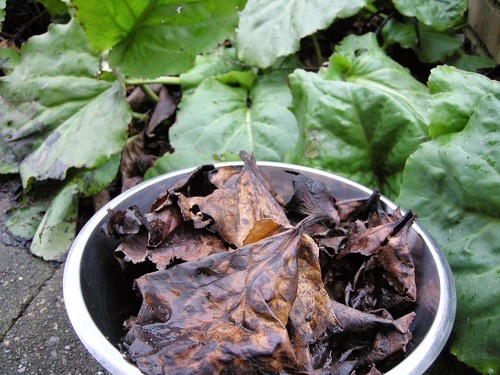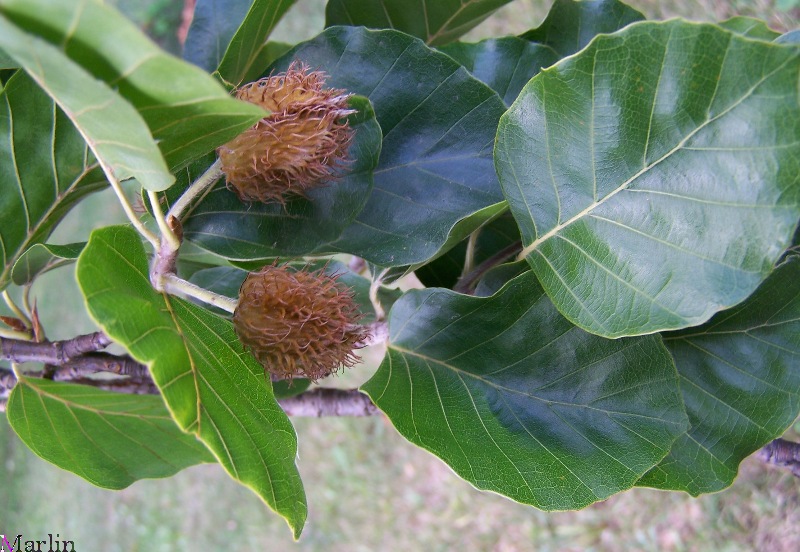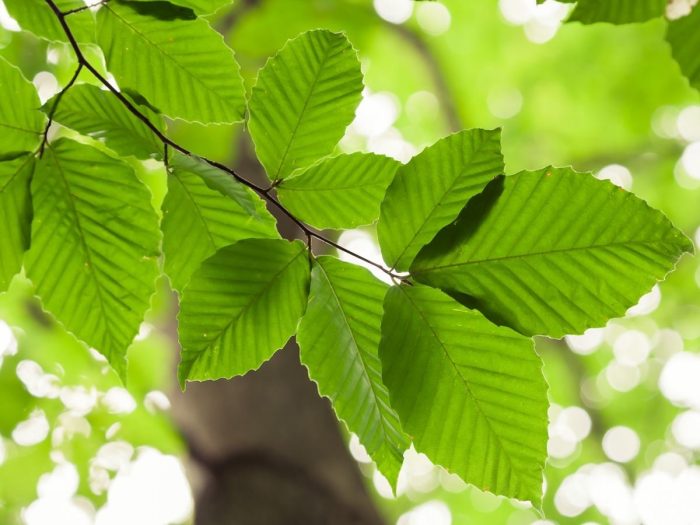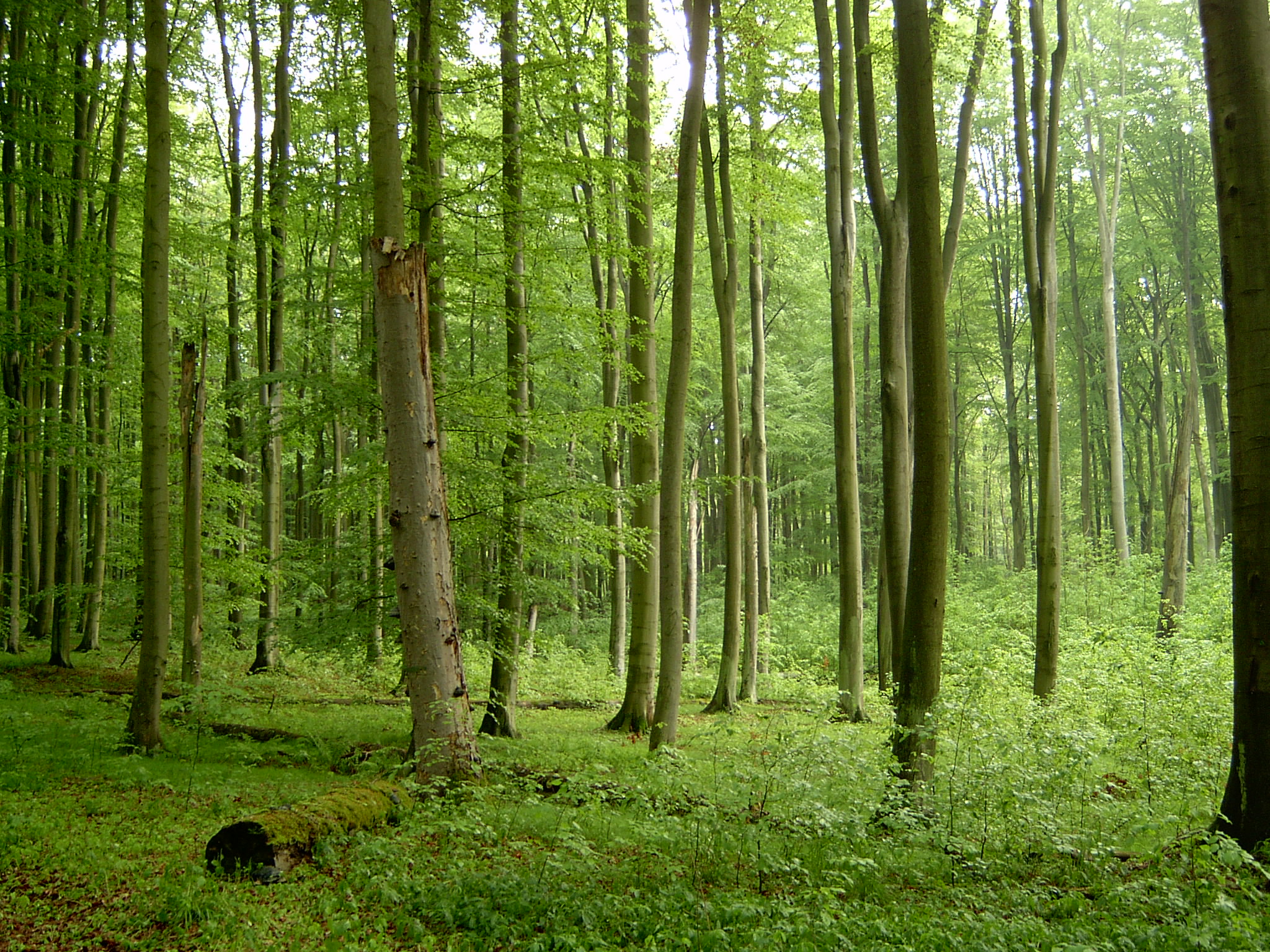Európai bükk. 40 m magasra is megnövő, egyenes, hengeres törzsű fa. Koronája magas, boltozatos. Zárt állományokban a törzse csak magasan ágazik el, a magányos példányoké jóval lejjebb – ezek koronája félgömb alakúvá fejlődik. A kérge vékony, sima, világos- vagy sötétszürke. A hosszúhajtások zegzugosan nőnek, szőrösek, szürkésbarnák. A következő évi rövidhajtások hónaljrügyeiből fejlődnek. A barna hónaljrügyek orsó alakúak, hosszúkásak, a csúcsuk molyhos. A virágrügyek zömökek.
A levelek elliptikusak, kezdetben áttetszően sárgászöldek, alul selymesek, majd a harmonikaszerű gyűrődésből kisimulva bőrszerűvé válnak. Ilyenkor a lemezük felül fényes, kopasz, a fonákon az erek mentén szőrös; a pálhalevelek hamar lehullanak. A csúcsuk hegyes, a nyelük rövid, a szélük ép (ritkán fogas), élük hullámos, pillás. Hosszuk 5–10 cm. A levelek (főleg a fiatal példányokról) gyakran csak tavasszal hullanak le.
https://hu.wikipedia.org/wiki/Eur%C3%B3pai_b%C3%BCkk
European beech. [Or Common beech,] Fagus sylvatica is a large tree, capable of reaching heights of up to 50 m (160 ft) tall[2] and 3 m (9.8 ft) trunk diameter, though more typically 25–35 m (82–115 ft) tall and up to 1.5 m (4.9 ft) trunk diameter. A 10-year-old sapling will stand about 4 m (13 ft) tall. It has a typical lifespan of 150–200 years, though sometimes up to 300 years. 30 years are needed to attain full maturity (as compared to 40 for American beech). Like most trees, its form depends on the location: in forest areas, F. sylvatica grows to over 30 m (100 ft), with branches being high up on the trunk. In open locations, it will become much shorter (typically 15–24 m (50–80 ft)) and more massive.
https://en.wikipedia.org/wiki/Fagus_sylvatica
Beech. Young leaves - raw[183]. A very nice mild flavour, they go well in a mixed salad. However, the leaves quickly become tough so only the youngest should be used[2, 5, 12, K]. New growth is usually produced for 2 periods of 3 weeks each year, one in spring and one in mid-summer. Seed - raw or cooked[2, 5, 7, 63, 183]. A pleasant sweet flavour, though rather small and fiddly[K]. The seed can also be dried and ground into a powder and then used with cereal flours when making bread, cakes etc[12]. The seed is rich in oil. The seed should not be eaten in large quantities because it contains a deleterious principle[65, 238]. The seed contains 17 - 20% of an edible semi-drying oil[4, 7, 8, 57]. This stores well without going rancid and is said to be equal in delicacy to olive oil[183]. It is used as a dressing for salads and also for cooking[238]. The seed residue is poisonous[9, 57]. The roasted seed is used as a coffee substitute[2, 63].
The bark is antacid, antipyretic, antiseptic, antitussive, expectorant, odontalgic[7, 9]. A tar (or creosote), obtained by dry distillation of the branches, is stimulating and antiseptic[4]. It is used internally as a stimulating expectorant and externally as an application to various skin diseases[4, 238]. The pure creosote has been used to give relief from toothache, but it should not be used without expert guidance[7]. The plant is used in Bach flower remedies - the keywords for prescribing it are 'Intolerance', 'Criticism' and 'Passing judgements'[209].
A semi-drying oil is obtained from the seed, it is used as a fuel for lighting, as a lubricant, for polishing wood etc[12, 13, 46, 57, 63]. The seed residue is poisonous[9, 57]. The leaf buds harvested in the winter and dried on the twigs are used as toothpicks[66]. The leaves are gathered in autumn and used as a stuffing material for mattresses etc[115]. Wood - hard, heavy, strong, very durable[13, 46]. It is not suitable for outdoor use[1] and is often attacked by a small beetle[4]. It has a wide range of applications, including furniture, flooring, turnery etc[100]. It makes a very good fuel[6, 66], burning with a lot of heat[4], and yields a charcoal known as 'Carbo Ligni Pulveratus'[46]. The wood has often been used as a source of creosote, tar, methyl alcohol. acetic acid[123].
http://www.pfaf.org/user/Plant.aspx?LatinName=Fagus+sylvatica
Dying with beech leaves. I stuffed the dye pot to the top, and left soaking overnight. I used 1:1 ratio (wool to dry weight of leaves). Next morning, gentle simmer for an hour, and strained off the dye. A surprising depth of colour in the water for a bag of end-of-the-season leaves. In went the pre-mordanted (Alum/Cream of Tartar) wool.
http://coloursofnorthernireland.blogspot.hu/2014/11/dyeing-with-beech-leaves.html
Copper beech. Copper beeches appeared as natural mutants of the common beech in various parts of Europe, as early as the 15th century. [...] Copepr beech has several preferred habitat traits, including a humid atmosphere and well-drained soil. It prefers fertile calcified or lightly acidic ground and is often found on the side of hills. It is widely grown as an ornamental tree for its distinctive purple leaves. As a cultivar it has no natural range, but shares many characteristics with common beech. [...] In Celtic mythology, Fagus was the god of beech trees. It was thought to have medicinal properties – beech leaves were used to relieve swellings, and boiling the leaves could make a poultice.
http://www.woodlandtrust.org.uk/visiting-woods/trees-woods-and-wildlife/british-trees/common-non-native-trees/copper-beech/
Marcescence. The leaves, when very young, are edible. One interesting behaviors in beeches is that they do not lose their leaves in the fall. Instead they may remain dry and brown on the tree until spring. This phenomenon is called marcescence and occurs most frequently in saplings and when the trees are clipped into hedges and on the lower branches of mature trees. This particular tree shows partial marcescence, typical of an individual this size.
http://naturewalk.yale.edu/trees/fagaceae/fagus-sylvatica/copper-beech-16
Festés vérbükkel. This colour took about 24 hours to develop in the dye pot, which shows that 'time' is such an important factor in plant dyeing.
http://www.imgrum.net/media/1258476922582705869_211226128
Beech hedge. The easiest way to propagate beech at home is from seed, which should be collected as soon as it is ripe in late autumn. Sow immediately in an outdoor sandy seedbed. The seeds can be sown in rows about 30cm (1ft) apart, spacing individual seeds 7.5-10cm (3-4in) apart. On heavier soils it is advisable to line the seed drills with sharp, gritty sand before sowing. If there is a cold winter then germination will often take place the following spring, but following a mild winter there may be no germination until the succeeding spring, 12 months later.
https://www.rhs.org.uk/advice/profile?pid=83
Health benefits. Digestion: Although eating the leaves off trees is not a particularly common practice, beech tree leaves and shoots have been eaten for hundreds (if not thousands) of years, particularly in times of famine. The high cellulose and fiber content is good for regulating digestion and offers a viable “foraging food” if that becomes necessary on hikes, camping trips, etc.
https://www.organicfacts.net/health-benefits/other/beech.html
Beech leaves. These leaves have a very smooth and tender texture. At a very young stage they are so fragile you can even look through them. Hard to imagine these will one day be the autumn leaves that will fall off and lay on the forest ground for a long time - beech is well-known for fact that the leaves decompose very slowly. [...] Chewing the young leaves, a flavour develops that is somewhere between lemon and sorrel. Very refreshing on a long spring walk, and after tasting one single leaf, you'll probably want to have some more. Definitely suitable as a tasty salad green.
http://www.wildplantforager.com/blog/eating-like-a-giraffe-5-trees-with-edible-spring-leaves
Abortion/inducing? The boiled beech leaves and bark were also used to prepare a decoction and this was used as a wash or made into a poultice to treat different problems such as frostbite, all kinds of minor burns and in treating poison ivy rash. The beech nuts were also normally eaten as a vermifuge to rid a person of intestinal parasites. Beech bark was also made into an herbal tea and this was used in the treatment of disorders that affected the lungs. The herbal beech bark tea was also used to induce an abortion in pregnant women suffering from problems in the early stages of pregnancy.
http://www.herbs2000.com/herbs/herbs_beech.htm
Beech timber. Beech is typically a pale cream color, sometimes with a pink or brown hue. Veneer tends to be slightly darker colored, as slicing the veneer usually requires the wood to be prepared with steam, which gives the wood a more golden tone. Flatsawn surfaces tend to be very plain, while quartersawn surfaces exhibit a silvery fleck pattern. [...] Overall good workability; it machines well, and glues, finishes, and turns well. Beech also responds superbly to steam-bending. It does, however, have a large amount of movement in service, so movement and wood stability must be taken into account. [...] Beech is considered non-durable or perishable; it is also susceptible to insect attack.
http://www.wood-database.com/european-beech/
Beech and babies and learning. In Westphalia, Germany, in the 18th century, it was believed that babies were picked out of a hollow beech tree (rather than delivered by the stork.) [...] Beech is a symbol for the written word, and for the wisdom within ancient learning. It is the sum of the wisdom of all the other trees. It was used to make writing tablets, and thin slices of Beech wood were bound together to make the first book. A great deal of paper is produced from beeches. The bark is excellent for carving, this practice dates back to Roman times. The Beech tree reminded our ancestors of the need to preserve all knowledge in writing for the benefit of future generations. [...] Like the Birch, the Beech fairy is a strongly feminine presence, but while birch is a "lady," beech is a queen. Sometimes known as the Mother of the Woods, she stands in stately feminine counterpart to the kingly oak. Her gifts are prosperity, but also wisdom, and she may grant wishes to those who are aware of her presence. She can help you let go of rigid ideas and move forward in faith and openness.
http://www.thegoddesstree.com/trees/Beech.htm
Beech as Bach remedy. [...] was described by Dr Bach as the remedy for people who 'feel the need to see more good and beauty in all that surrounds them.' People in a Beech state are intolerant of difference. They lack compassion and understanding of the circumstances and paths that other people are given, and fail to see that they too are working towards perfection in their own ways. Sometimes Beech intolerance is manifested as outbursts of irritability: the remedy helps to encourage tolerance and understanding, and as this happens so the irritability also fades.
http://www.bachcentre.com/centre/38/beech.htm








.jpg)












